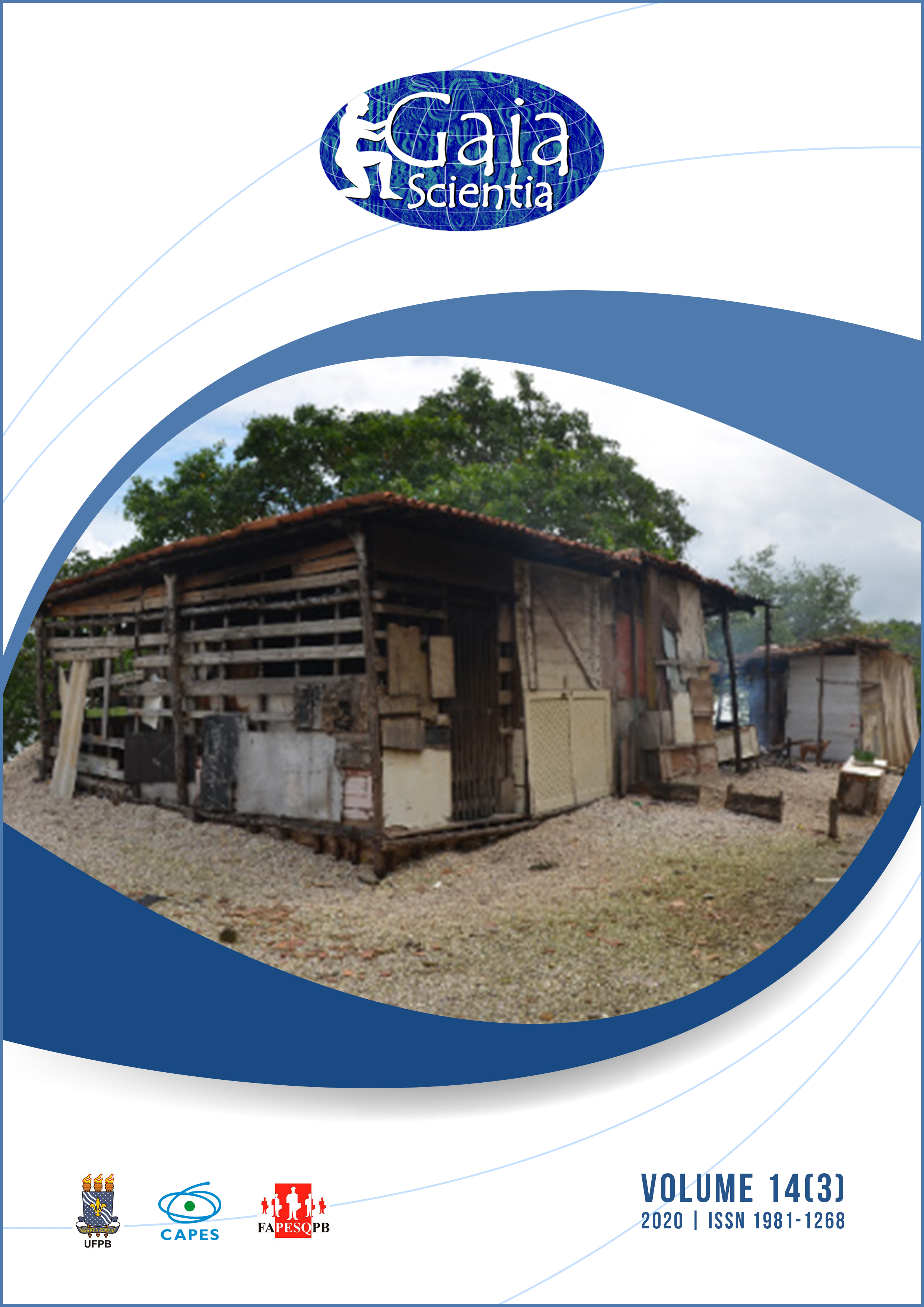Local knowledge and fishing of maçunim (Anomalocardia flexuosa) in the estuarine-lagoon system of Roteiro, Alagoas – Brazil
DOI:
https://doi.org/10.22478/ufpb.1981-1268.2020v14n3.52220Abstract
The estuarine-lagoon system of Roteiro, a central part of the Alagoas coast, is an environment characterized by socio-environmental conflicts that combine the presence of a conservation unit, the high tourist demand, and the fishing of traditional communities that seek the bivalve Anomalocardia flexuosa as an important food source and income-generating resource. Thus, within this scenario, the objective was to characterize the extractive activity of A. flexuosa in the lagoon. To reach this purpose, in 2019, 14 semi-structured questionnaires were applied to shellfish gatherers. The investigation was also based on free observation of fishing routines. The results showed points of convergence between traditional and academic knowledge regarding the influence of intraspecific competition for space and food for the recruitment of new individuals and the falls in productivity caused by high rainfall rates. The collection is done in a rudimentary manner, with the aid of a tool called ticuca. Catches occur in areas with great environmental variability, low wave energy, and sandy sediment. The processing of the bivalve is carried out on the landing site, on poorly constructed fishing ranches, and in inadequate sanitary conditions. The shells are discarded around the ranches – about 27,000 kg shells/month -, changing the local landscape.










